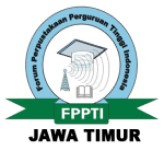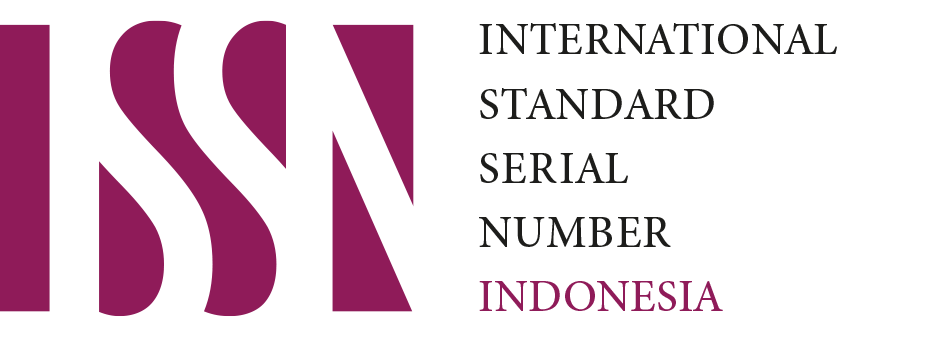Application of Information and Communication Technology (ICT) in Dissemination of Information in Selected Special Libraries in Ilorin Metropolis, Kwara State, Nigeria
Unduhan
Background of the study: This study examined the Application of ICT in Dissemination of Information in Selected Special Libraries in Ilorin Metropolis, Kwara State, Nigeria. Three Special libraries from the metropolis of the state comprised the sample population of the study; Central Bank of Nigeria Library, Michael Imoudu Institute of Labor Studies Library and Ghalib Chamber Library.
Purpose: The study employed a survey research design using the Enumeration sampling technique. A questionnaire was used to obtain data from the respondents. The population of the study consisted of twenty-one (21) respondents which comprised of library professionals and library assistants. The usage of Email to render CAS is not a norm in these special libraries.
Method: Data collected from the field were analyzed using descriptive method of analysis.
Findings: Apart from CAS, it was found that selective dissemination of information (SDI) is not done with the aid of technological tools in these Libraries and these libraries rarely make use of OPAC to provide easy access to their resources, efficiency and effectiveness of ICT in the dissemination of information were not realized because of the low usage of ICT to drive operations in the library. The study recommended that there should be a standard alternative source of power for proper Usage of ICT facilities and management of special libraries should help their users in subscribed for a database that would assist them in having access to robust information.
Conclusion: The study concluded that ICT facilities are put in place in the selected special libraries are not adequate and are as well not fully utilized. It was gathered that the usage of ICT facilities to render services like current awareness services (CAS) is not up to expectation.
Unduhan
REFERENCES
Asghar, Mahe, B. & Shafique, F. (2012). Service Evaluation in Special Libraries of Bahawalpur: A Comparative Study of GCT, QMC, and UCET, Library Philosophy and Practice. Retrieved from http://digitalcommons.unl.edu/libphilprac/822
Bilawar, P.B. (2013). Statement on Library and Information Services Staff Appointments American International Journal of Research in Humanities; Arts and Social Sciences, 3(2), 134-140
Bitagi, A.M. (2013). "Information Resources Utilization for Research by Scientists in Agricultural Research Institutes in Nigeria". Seminar presented at the Faculty of Education, University of Nigeria, Nsukka, Enugu State.
Brey, P. (2009). Philosophy of Technology Meets Social Constructivism: A Shopper's Guide. In Readings in the Philosophy of Technology, 2nd ed. Edited by David M. Kaplan. Lanham: Rowman & Littlefield Publishers, 268-324.
Chandler, D., Daniel, H., & Munday, H. & Rod, T. (2012). "definitions of ICT”. Retrieved fromhttps://www.google.com.ng/amp/s/collegeassignments.wordpress.com/2012/10/01/provide-five-definitions-of-ict/it-indicate-the-author-and-year-what-are-the-similarities-and-differences-in-these-definitions-provide-your-own-definition-of-ict/it/amp/
Daintith, J. (2009). A Dictionary of Physics, Oxford University Press. Retrieved from https://www.revolvy.com/page/Information-technology.
Ifueko, O. O. (2011). The Impact of Information and Communication Technology (ICT) in Nigerian University Libraries. LibraryPhilosophyandPractice(e-journal). Retrieved from https://digitalcommons.unl.edu/libphilprac/583/
Igwesi, U., Nwachukwu, V. N. & Chimah, J. N. (2010). Software choice and use in libraries: Requirements for effective computer application in University Libraries in Nigeria. A paper presented at the state conference and AGM of the Nigerian library association, Benue state, June, 17 &18.
Made R. H., & Azubogur, C. K. (2017). ICT Infrastructure in University Libraries in Karnataka. Annals of Library and information studies, 56, 236-241.
Madu, E.C. (2004). Automation and Service provision in libraries and Information Centre in developing countries, in Madu C. (Ed) Technology for Information Management and services. Ibadan: E Nicole man publication, 45-54.
Madu, C.C. & Azubogu, N. (2017).Impact of the application of Information and Communication on Information dissemination in selected libraries of Federal Universities in South-South Nigeria. Project topic submitted to the department of Library and Information science, University of Ilorin
Make, J. N. (2008). Analysis of University undergraduate students' and lecturers' needs for the information age: Implications for teaching and learning. Proceedings of first international conference of the faculty of Education, University of Nigeria Nsukka.
Mamman, E.S. (2015).Utilization of Information and Communication Technologies (ICTs) in Public Library Services in Nigeria (Unpublished doctoral dissertation), University of Nigeria, Nsukka, Enugu, Nigeria.
Murray, T. E. (2013). The Specialist. Journal of Library Administration. 53 (1), 274-282.
Okenwa, G. N. (2008). Meeting the Challenges of Information Technology: A case for reform in distance education programme. Proceedings of first International conference of the faculty of Education, University of Nigeria Nsukka,
Rana, H.K. (2009). Impact of Information and Communication Technology on Academic Libraries in Punjab. Journal of Library and Information Sciences, 4(1),56-63
Ramzan, M. & Singh, D. (2009). Status of Information Application in Pakistan libraries. The Electronic Library 27(4), 573-587.
Routledge, T. (1997). International Encyclopedia of Information and Library Science. Feather John & Sturges, Paul (Eds), 2ndEd. New York: Routledge.
Volti, R. (2009). Society and Technological Change, 7th Ed. New York: Worth Publishers.
Williams, R.V. (2007). Special Libraries Management Handbook: The Basics. Retrieved from,http://www.libsci.sc.edu/bob/class/clis724/SpecialLibrariesHandbook?INDEX.htmwww.futalib.wordpress.com/2013/01/13/use-of-information-and-communication-technology-ict-in-the-library-library-automation/
Record and Library Journal by Unair is licensed under a Creative Commons Attribution-ShareAlike 4.0 International License.
1. The journal allows the author to hold the copyright of the article without restrictions.
2. The journal allows the author(s) to retain publishing rights without restrictions
3. The legal formal aspect of journal publication accessibility refers to Creative Commons Attribution Share-Alike (CC BY-SA).
4. The Creative Commons Attribution Share-Alike (CC BY-SA) license allows re-distribution and re-use of a licensed work on the conditions that the creator is appropriately credited and that any derivative work is made available under "the same, similar or a compatible license”. Other than the conditions mentioned above, the editorial board is not responsible for copyright violation.



 57201398420
57201398420

























